Practice Free 300-410 Exam Online Questions
Refer to the exhibit.
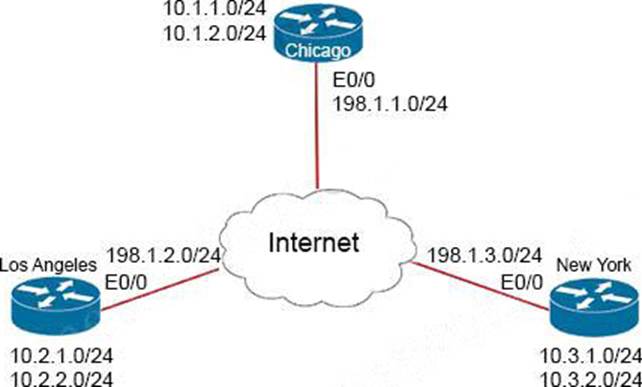
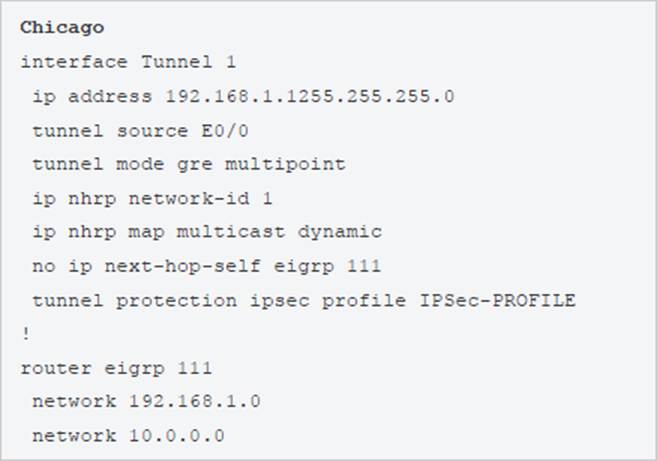
The Los Angeles and New York routers are receiving routes from Chicago but not from each other.
Which configuration fixes the issue?
- A . Interface Tunnel1no ip split-horizon eigrp 111
- B . Interface Tunnel1Ip next-hop-self elgrp 111
- C . Interface Tunnel1tunnel mode Ipsec Ipv4
- D . Interface Tunnel1tunnel protection ipsec profile IPSec-PROFILE
A
Explanation:
In this topology, Chicago router (Hub) will receive advertisements from Los Angeles (Spoke1) router on its tunnel interface. The problem here is that it also has a connection with New York (Spoke2) on that same tunnel interface. If we don’t disable EIGRP split-horizon, then the Hub will not relay routes from Spoke1 to Spoke2 and the other way around. That is because it received those routes on interface Tunnel1 and therefore it cannot advertise back out that same interface (splithorizon rule). Therefore we must disable split-horizon on the Hub router to make sure the Spokes know about each other.
Refer to the exhibit.
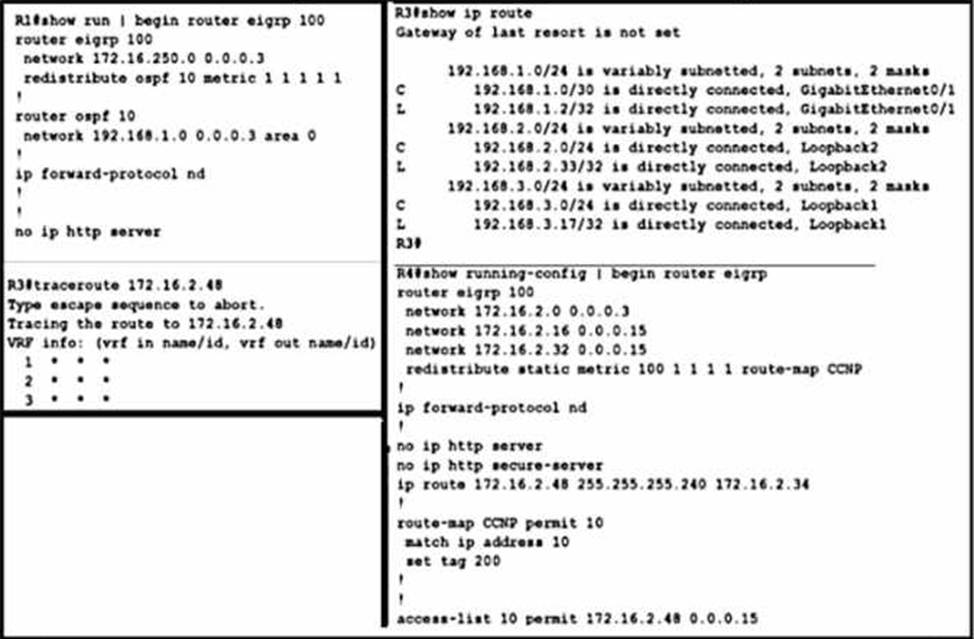
An engineer must troubleshoot a connectivity issue impacting the redistribution of the subnet 172.16.2.48/28 into the OSPF domain.
Which configuration on router R1 advertises this subnet into the OSPF domain?
- A . R1(config)#route-map CCNP permit 10
R1(config-route-map)#match route-type internal
R1(config-router)#router ospf 10
R1(config-router)#redistribute eigrp 100 subnets route-map CCNP - B . R1(config)#route-map CCNP permit 10
R1(config-route-map)#match route-type level-2
R1(config-router)#router ospf 10
R1(config-router)#redistribute eigrp 100 subnets route-map CCNP - C . R1(config)#route-map CCNP deny 10
R1(config-route-map)#match tag 200
R1(config)#route-map CCNP permit 10
R1(config-router)#router ospf 10
R1(config-router)#redistribute eigrp 100 subnets route-map CCNP - D . R1(config)#route-map CCNP permit 10
R1(config-route-map)#match tag 200
R1(config-route-map)#exit
R1(config-router)#router ospf 10
R1(config-router)#redistribute eigrp 100 subnets route-map CCNP
DRAG DROP
Drag and drop the actions from the left into the correct order on the right to configure a policy to avoid following packet forwarding based on the normal routing path.
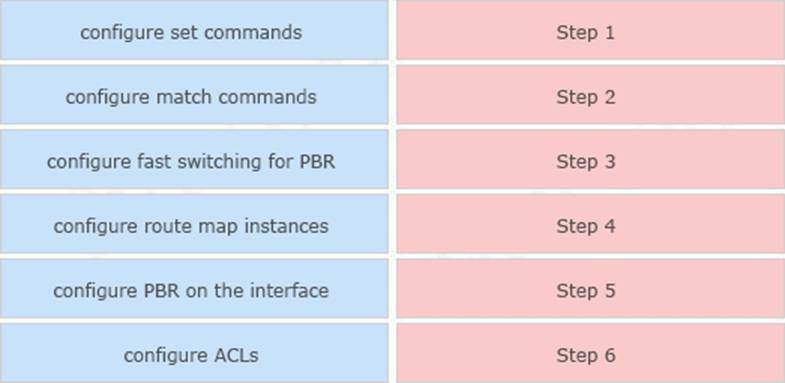
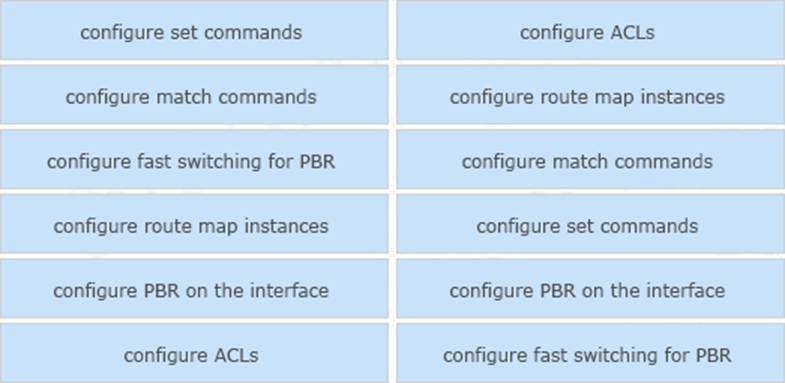
Explanation:
https://community.cisco.com/t5/networking-documents/how-to-configure-pbr/ta-p/3122774
Refer to the exhibit.
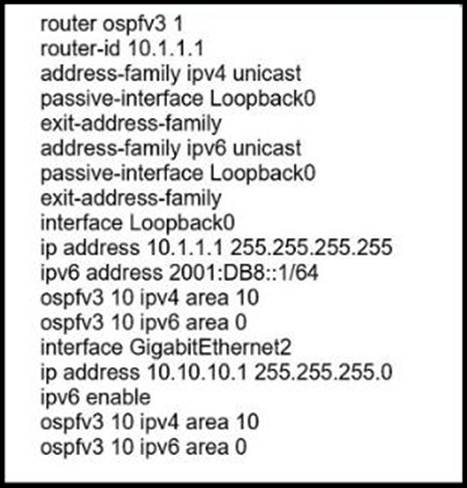
An engineer noticed that the router log messages do not have any information about when the event occurred.
Which action should the engineer take when enabling service time stamps to improve the logging functionality at a granular level?
- A . Replace OSPF process 10 on the interfaces with OSPF process 1 and configure an additional router IO with IPv6 address
- B . Replace OSPF process 10 on the interfaces with OSPF process 1. and remove process 10 from the global configuration
- C . Replace OSPF process 10 on the interfaces with OSPF process 1 for the IPv6 address and remove process 10 from the global configuration
- D . Replace OSPF process 10 on the interfaces with OSPF process 1 for the IPv4 address and remove process 10 from the global configuration
configuration on the hub router meets this requirement?
- A . interface Tunnel0tunnel mode gre multipoint
- B . interface Tunnel0 tunnel mode dvmrp
- C . interface Tunnel0 tunnel mode ipsec ipv4
- D . interface Tunnel0 tunnel mode ip
How does an MPLS Layer 3 VPN differentiate the IP address space used between each VPN?
- A . by RD
- B . by address family
- C . by MP-BGP
- D . byRT
An engineer configured the wrong default gateway for the Cisco DNA Center enterprise interface during the install.
Which command must the engineer run to correct the configuration?
- A . sudo maglev-config update
- B . sudo maglev install config update
- C . sudo maglev reinstall
- D . sudo update config install
Refer to the exhibit.
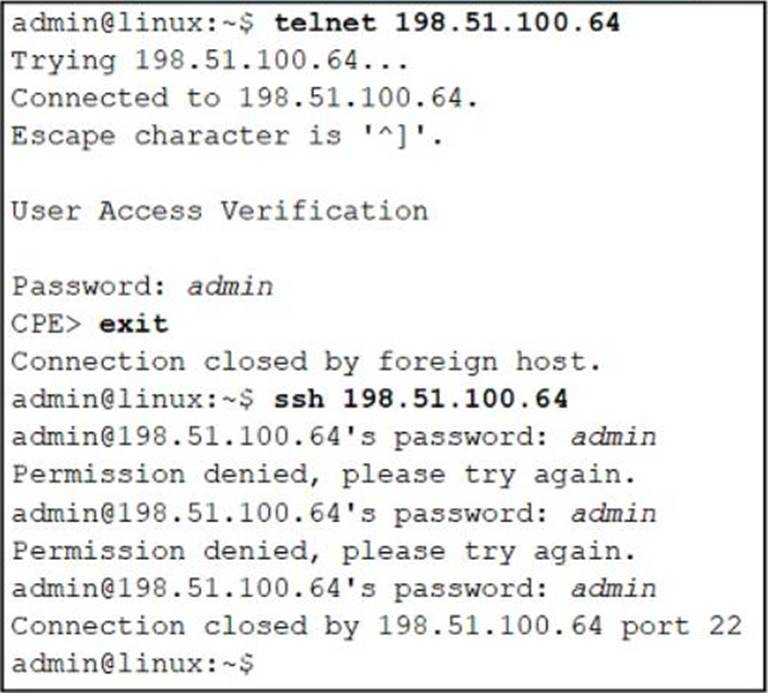
An administrator can log in to the device using Telnet but the attempts to log in to the same device using SSH with the same credentials fail.
Which action resolves this issue?
- A . Configure SSH service on the router
- B . Configure transport input all on the VTY lines to allow SSH
- C . Configure to use the Telnet user database for SSH as well
- D . Configure the VTY lines with login local
Refer to the exhibit.
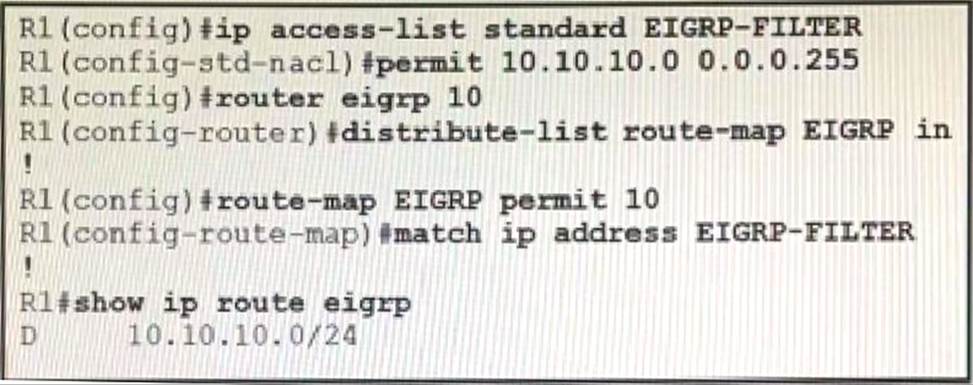
An engineer must filter incoming EIGRP updates to allow only a set of specific prefixes. The distribute list is tested, and it filters out all routes except network 10.10.10.0/24.
How should the engineer temporarily allow all prefixes to be learned by the routers again without adjusting the existing access list?
- A . A permit 20 statement should be added before completing the ACL with the required prefixes, and then the permit 20 statement can be removed.
- B . A permit any statement should be added before completing the ACL with the required prefixes and then the permit any statement can be removed.
- C . A continue statement should be added within the permit 10 statement before completing the ACL with the required prefixes, and then the continue statement can be removed.
- D . An extended access list must be used instead of a standard access list to accomplish the task
Refer to the exhibit.
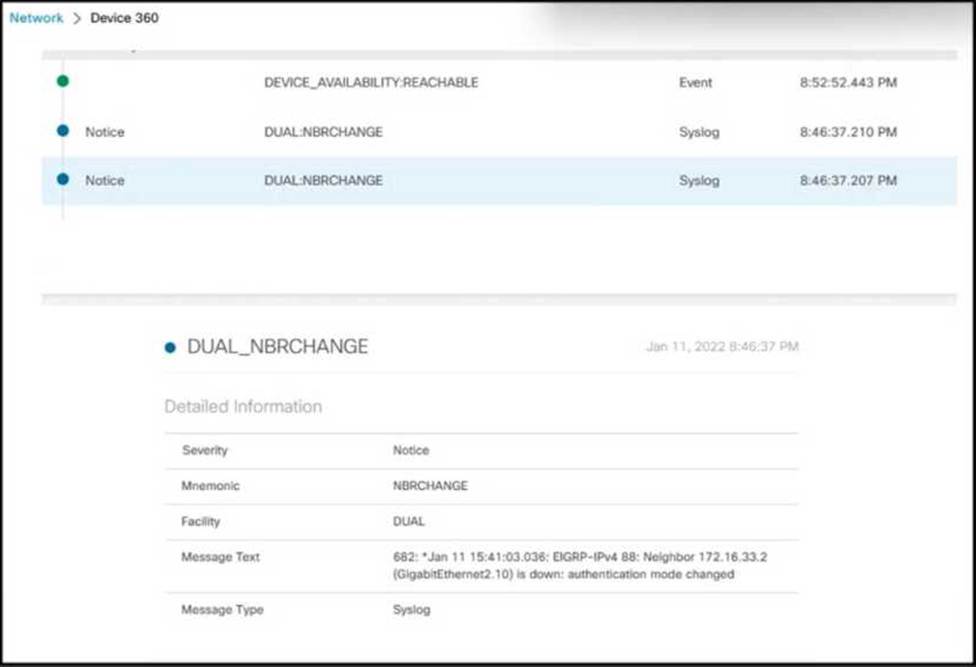
R1 lost its directly connected EIGRP peer 172.16.33.2 (SW1).
Which configuration resolves the issue?
- A . key chain EIGRP
key1
key-string Cisco
!
interface GigabitEthernet 2.10
Ip authentication mode elgrp 88 md5
Ip authentication key-chain elgrp 88 EIGRP - B . key chain EIGRP
key1
key-string Cisco
!
interface GigabitEthernet 2
ip authentication mode elgrp 88 md5
ip authentication key-chain elgrp 88 Cisco - C . key chain EIGRP
key1
key-string Cisco
!
interface GigabitEthernet 2
ip authentication mode elgrp 88 md5
ip authentication key-chain elgrp 88 EIGRP - D . key chain EIGRP
key1
key-string Cisco
!
interface GigabitEthernet 2.10
ip authentication mode eigrp 88 md5
ip authentication key-chain eigrp 88 Cisco
